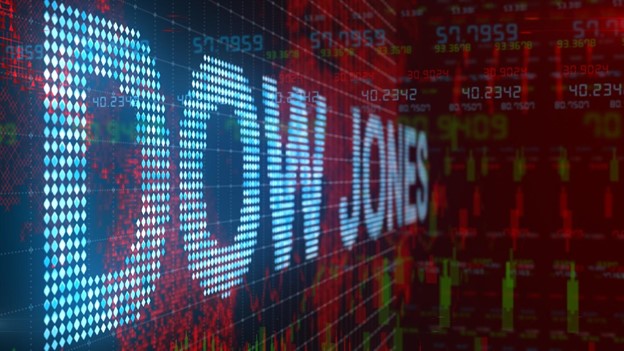This week, markets woke to news that Russia invaded its neighbor Ukraine.
Tensions mounted for weeks. Most believed Russia would wait for the Olympics to end. Well, the closing ceremonies were Sunday and Putin wasted no time on his military threat.
What is the impact on the global economy?
The conflict impacts an already challenged global supply chain. Semiconductors, ground zero for the issues, will come under further pressure as key elements are sourced from this region.
The White House responded to the military invasion by announcing sanctions. One of the elements was aimed at cutting Russia off from the U.S. chip industry. This could have a cascading effect on both sides.
Semiconductors power everything electronic on earth and also in space. It is a difficult and complex industry. The industry is interdependent and no nation in the world has managed the entire ecosystem. The supply chain is largely in Asia and the U.S..

Ukraine and Russia’s Role in the Semi Supply Chain
Neither Ukraine nor Russia controls a serious chunk of the semiconductor supply chain. They do have companies that supply key ingredients including neon, palladium, and rare earth materials. This will reverberate down the supply chain and lead to price adjustments by other suppliers.
The Ukraine is the leading exporter of neon, a highly purified gas that is used for the most import process- etching circuit designs into silicon wafers to create chips. Ukraine supplies more than 90% of U.S. semiconductor-grade neon, critical for lasers used in chipmaking. The gas is a biproduct of Russian steel manufacturing which is purified in the Ukraine.
Russia is the leading producer of palladium. Palladium is essential for memory and sensor chips. The United States get approximately 35% of its palladium from the country. The availability of these materials was already tight.
The largest application for palladium is in catalytic converters which could lead to further delays in the auto industry. Palladium is also used in jewelry, dentistry, watch making, aircraft spark plus, surgical instruments and electrical contacts.
Russia is a minor supplier of rare earth but that puts further reliance on China for these key materials. We will get to the China issue in a moment.

The Diversification Warnings
The White House has been warning chip suppliers to diversify their sourcing for weeks as concerns over Russia retaliating against sanctions surged. Most companies started the process years ago. The 2014 Russia/Ukraine tensions, the U.S.-China trade standoff, the pandemic, and Japan’s diplomatic spat with South Korea all raised the need to diversify.
In an interview with Bloomberg, Micron (MU) CEO Sanjay Mehrota stated that it carried a large inventory of these supplies which should allow it to meet near-term demand. The memory chipmaker sources some of its neon supply from Ukraine but said that it has diversified and can work around supply issues
Dutch multinational player ASML Holdings specializes in the development of photolithography systems. It indicated that it is seeking alternative sources for its factories. ASML sourced less than 20% of the gas it uses from that region. ASML is a key supplier for Taiwan Semi (TSM), Samsung (SSNLF) and Intel (INTC).
South Korea memory chipmaker SK Hynix told reporters last week that it has “secured a lot of material” and there was “no need to worry”.
Recent chip IPO Global Foundries (GFS) touts itself as the safe geopolitical play when it went public in late November. GFS stated that it did not expect direct risk from tensions and had flexibility to source elsewhere. Taiwan chipmaker United Microelectronics Corp (UMC) echoed those comments.
The World’s largest chipmaker, Taiwan Semi (TSM) has not addressed the situation, but Taiwan’s Ministry of Economic Affairs said there was no direct impact on materials or production activities as Russia is not a major market for foundries.
Who is swimming naked?
The commentary is encouraging for market participants. But it will take a few quarters to truly understand the impact from any sanctions. Recall, the U.S.-Sino trade war started in late 2018 but we failed to see the impact until 2020.
It is troubling to see China’s comments following the Russian aggression. China laid blame on the U.S, for inciting this war. Concerns that China could use this as the blueprint to invade Taiwan, THE key area for global semiconductors will be on the rise. This will be an additional headwind for semis and the global economy moving forward.
Companies have been creative in finding new sources and avoiding over reliance on one producer. Warnings of the Russian invasion have been around for weeks. The Ukraine geopolitical concerns have been around since 2014. Hopefully companies have been smart and can avoid these disruptions.
But it will take a few quarters for this wave to recede. Then we will get a better look at who is swimming naked. This will be a major focus for market participants in upcoming earnings and conference calls.
The industry may not see an impact in the short run but there is the potential for negative long-term effects. Supply shortages will continue to lead to higher semiconductor prices. With semiconductors being used in nearly every product this means higher inflation pressures for a global economy already under pressure.
It will take a few quarters to truly understand the reverberations from Russia’s military incursion. We would continue to monitor comments from semiconductor companies to ascertain the full impact on the global economy.




